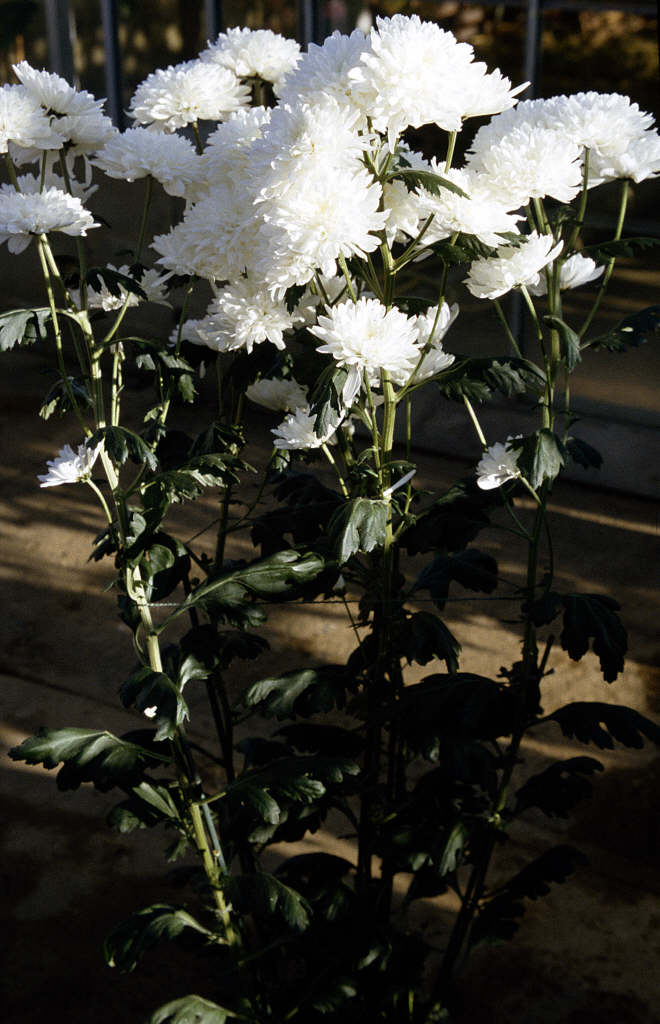Size
Ultimate height
0.5–1 metresTime to ultimate height
1–2 yearsUltimate spread
0.1–0.5 metresGrowing conditions
Moisture
Moist but well–drained, Well–drainedpH
Acid, Alkaline, NeutralColour & scent
| Stem | Flower | Foliage | Fruit | |
| Spring | Green | |||
|---|---|---|---|---|
| Summer | Green | |||
| Autumn | White | Green | ||
| Winter |
Position
- Full sun
Aspect
South–facing or West–facing or East–facing
Exposure
Sheltered Hardiness
H2Botanical details
- Family
- Asteraceae
- Native to GB / Ireland
- No
- Foliage
- Deciduous
- Habit
- Bushy
- Potentially harmful
- Skin allergen. Wear gloves and other protective equipment when handling
- Genus
Chrysanthemum are erect woody-based perennials with aromatic, pinnately lobed leaves and flowerheads of diverse form, from late summer to late autumn
- Name status
Accepted
- Horticultural Group
- Reflexed Indoor Spray chrysanthemums have branched stems bearing several fully double flowerheads with recurved florets
How to grow
Cultivation
Grow in a cold frame in a peat-free, loam-based potting compost and move into a warm glasshouse in early autumn. Provide bright filtered light with good ventilation and a minimum temperature of 10°C. During the growing season water moderately and apply a balanced liquid fertiliser weekly
Propagation
Propagate by rooting softwood cuttings in peat-free potting compost at 16°C in spring. Pot on rooted cuttings in late June to early July into 23cm pots and pinch out as soon as established
Suggested planting locations and garden types
- Patio and container plants
Pruning
Pinch out growing tips and disbud as required
Pests
Susceptible to leaf and bud eelworms, aphids, glasshouse whitefly, glasshouse red spider mite and capsid bug
Diseases
May be susceptible to glasshouse grey mould, powdery mildews and chrysanthemum white rust
Get involved
The Royal Horticultural Society is the UK’s leading gardening charity. We aim to enrich everyone’s life through plants, and make the UK a greener and more beautiful place.
